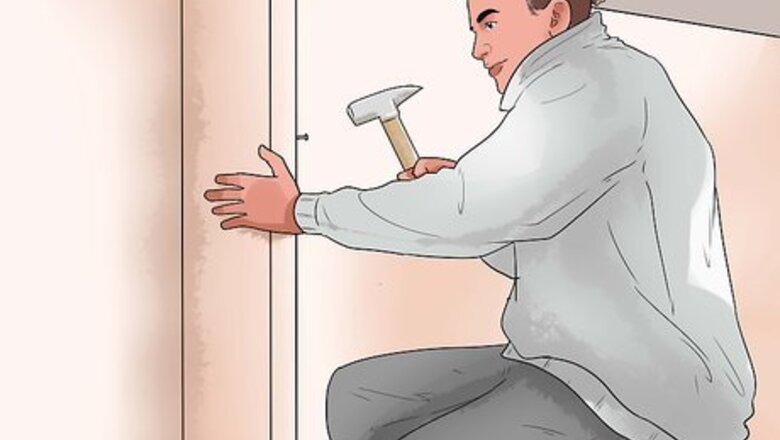
views
X
Expert Source
Sheri WilliamsCertified Dog Trainer
Expert Interview. 5 June 2020.
A fearful puppy will run back to his mother for protection, but a fearful adult (especially one that cannot run away) is like to take attack as the best form of defense and become aggressive.[2]
X
Research source
There are several things that you can do to deal with your dog’s aggression, but keep in mind that retraining an aggressive dog takes lots of time and patience.
Staying Safe
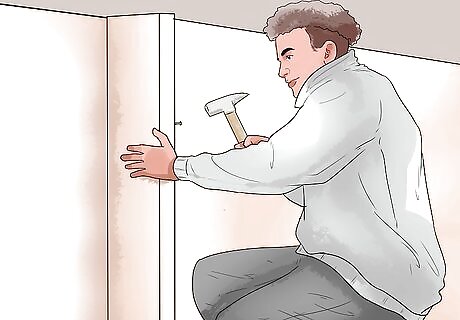
Make sure that your dog cannot escape his fence. If you have an aggressive dog, it is crucial to have adequate strong fencing around your property so that the dog cannot gain access to passers-by. Check your fence on a regular basis to make sure that there are no weak spots or holes in the ground through which your dog might escape and harm someone.

Keep your dog on a strong leash. On walks you must keep your dog on a strong leash so that you can control him with ease. You may want to consider a training harness as well to help you control your dog. It is crucial to have a strong leash and to be able to control your dog in case he should threaten other dogs or people.
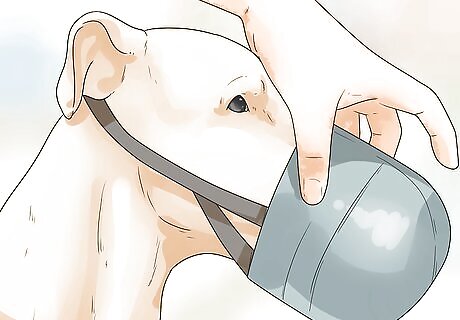
Use a muzzle. In addition to a leash and harness, your dog should wear a muzzle in public or whenever you have visitors. Look for a muzzle with a basket design so that your dog will be able to pant and drink. A basket design will also allow you to feed your dog treats through the muzzle, while still providing excellent protection from bites. To teach your dog to wear a muzzle put his favorite treat into the muzzle and hold it very still. Allow the dog to investigate and eat the treat. Do not attempt to fasten the muzzle at this stage. Give your dog a treat and pop the muzzle over his nose while he's eating. Then remove the muzzle as soon as he finishes the treat. After your dog has accepted this practice, put a treat in the muzzle again. Then, after he has eaten the treat, put the muzzle on him and feed him treats through the muzzle. Wait a little bit between each treat so that your dog will begin to associate the muzzle with treats.
Using Desensitization

Understand the purpose of desensitization. The aim of desensitization is to expose your dog to the thing he fears, but in a less intense way. Doing so helps to ensure that he does not become too anxious. As he is exposes to his fears, you will reward him for being calm in the presence of the trigger, and over time, you will keep bringing the trigger a little closer. Desensitization take many sessions, often with the trigger only moving one step closer each session. That is why desensitization training takes so much time and patience.
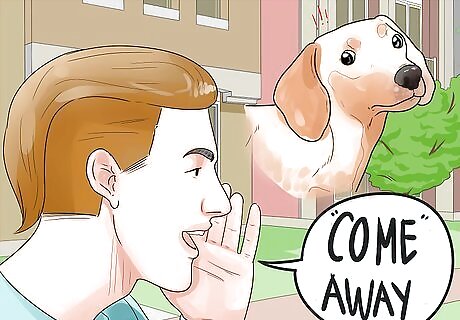
Teach your dog the “Come Away” command. The “come away” command teaches your dog to leave one situation and come over to you. You may need to use this command to distract your dog from a perceived threat, such as a stranger or another dog. This command also makes use of a dog's natural instinct to return to his mother (in this case you) in times of stress. To teach "come away", take your dog into your yard or a place without distractions. Keep your dog on a long line if the yard is not fenced in. Let him explore the yard and then give him the command "come away" and call his name. As he moves towards you, take a step or two away but encourage him to come closer. Once he reaches you, reward him with a treat. Keep practicing this command in the yard. You want to reach the stage where you call his name and say “come away” and he comes running.
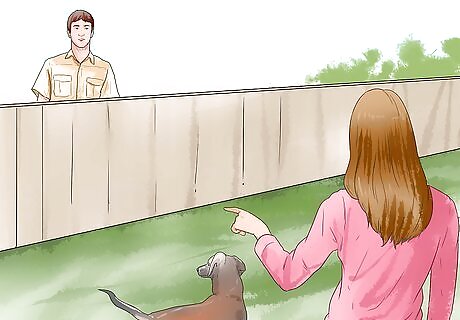
Expose your dog to his trigger in a safe, controlled way. To expose your dog to his trigger, make sure that you have control of your dog and then bring the trigger within your dog’s line of sight. For example, if your dog is triggered by unfamiliar men, then have a male friend stand at the edge of your yard. He should be far enough away so that your dog will notice him but not react.
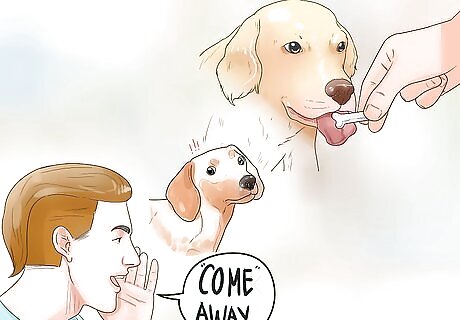
Use the “come away” command to get your dog’s attention. After your dog has noticed the man, call him with “come away” and reward him. Keep praising your dog and have the man move a step closer. Let the dog explore again (on the long line) and when he notices the man call him back again with “come away”.
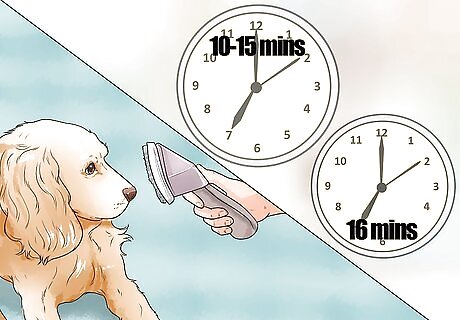
Keep the session short and end on a positive note. Expose your dog to the trigger for around 10 -15 minutes and try to end on a positive note. Do not try to push the session past 15 minutes or your dog may become fearful. If your dog becomes anxious, aggressive, or otherwise agitated, get him back under control with a “Sit.” Then, reward him for sitting and end the session.

Take it slow. Remember that you will need to bring the trigger to your dog’s aggression closer and closer over time. But it is important to do so little by little. For example, if you started with a man standing at the edge of your yard in your first session, have him begin by standing one step closer in the next session. Do not try to go too fast in these sessions or your dog’s aggressive behavior may become worse.
Dealing with Other Behavioral Issues
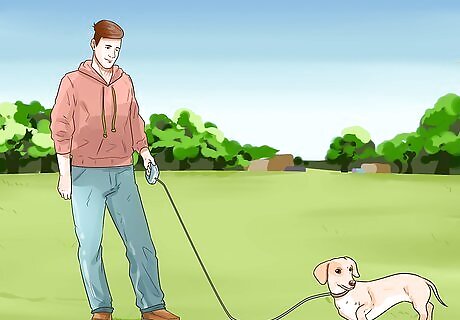
Reduce your dog’s opportunities to practice guarding behavior. Try to keep your dog out of situations where he gets to practice and exhibit his guarding behavior. This means not allowing him to patrol up and down the fence, but keeping him indoors and giving him exercise in the park instead and taking your dog to another room when guests arrive. For dogs that bark at the front door when visitors arrive, consider keeping him on a long leash and taking him into another room as soon as guests arrive. If your dog barks, don’t react or shout. Otherwise, your dog may interpret your reaction as you joining in and it may encourage is barking.
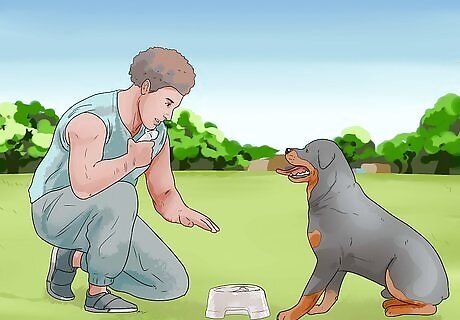
Teach your dog that he has no need to guard his food. Put the bowl down but with only part of his dinner in it. As he eats, scatter more of his dinner as close to the bowl as he allows you to get. If necessary, keep some food in a treat bag and each time you walk past the bowl, scatter some food in the bowl so that he begins to link your presence with plentiful food. Start with an empty bowl and have your dog sit on command. As soon as he sits, put a handful of food into the bowl and let him eat. Then command him to “Sit” again and put in another handful. Repeat. This reinforces you are in control and also that you are the provider of food.
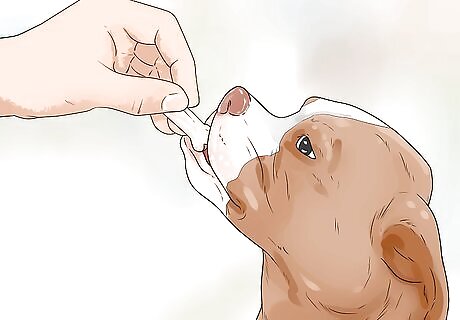
Follow up with positive reinforcement. Once your dog reaches the point where she no longer shows aggressive behavior to her trigger, keep using positive reinforcement to let her know she is doing well. Praise her and provide treats in instances where she does just fine with the stimulus in order to keep strengthening those associations.
Understanding Your Dog’s Aggression
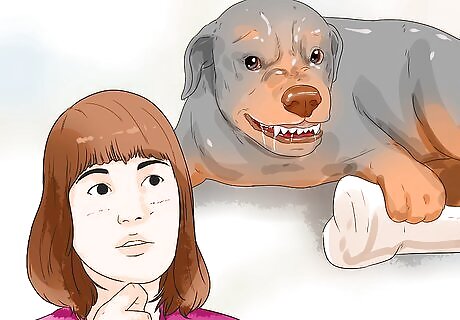
Think about what triggers your dog’s aggressive behavior. Dogs respond with aggression for many different reasons. Your dog’s aggressive behavior may be triggered by a certain type of person or situation. For example, some dogs become aggressive when new people visit, or when people walk past your dog’s yard area. Try to identify your dog’s triggers to help you as you attempt to retrain him.
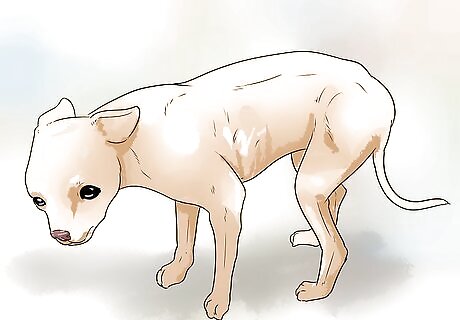
Get into the habit of reading your dog’s body language. Pay special attention to his body language when he is exposed to one of his triggers. Many dogs are fearful or anxious prior to aggression. Common signs to watch for include a lowered head, low body posture, tail tucked between the legs, licking lips, looking away, dilated eyes, shivering or shaking.
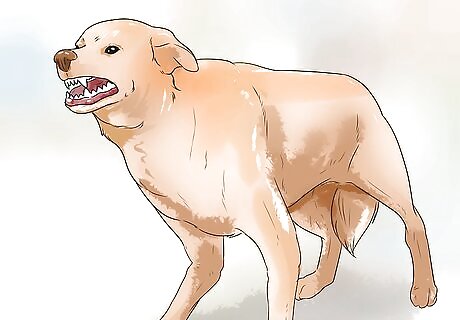
Learn how to recognize common signs of aggression. A dog that intends to attack will make a subtle change in the way he is standing. He will make direct eye contact and stare at his target. Then he will shift his weight so that it is over his front legs. He may also give a stiff tail wag with his tail held low. Watch for these signs because they indicate that a dog is about to lunge. If you are ever faced with a dog showing any of these signs, your best defense is to step aside or away from the dog and avoid staring back at him. Be quiet and calm as you do so. If you notice your dog behaving this way, get him under control with a leash or bring him inside immediately.
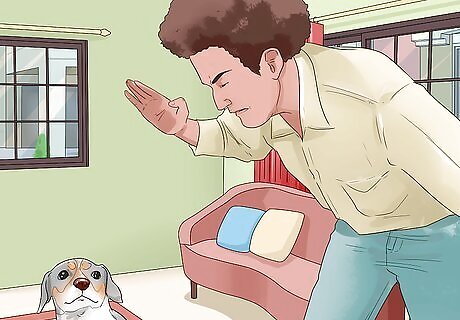
Understand that there is no quick fix for aggression. You will not be able to solve your dog’s aggression problem with a single training session. Retraining an aggressive dog takes time. Be patient and take precautions (such as a strong leash and a muzzle) to protect yourself and others as you retrain your dog.
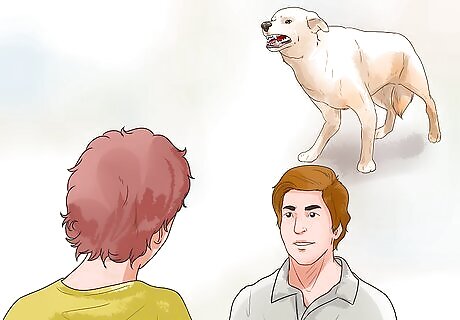
Consider having a consultation with a registered pet behaviorist. To increase your chances of success in retraining your dog, it is a good idea to consider a consultation with a registered pet behaviorist. Aggression has many contributing factors and a home consultation with an expert may give you the best chance of identifying all of these factors and working out the best strategy to control them. For example your dog may have a fear of strangers or other dogs, territorial aggression, or be prone to protecting a resource such as food. Ask your veterinarian for help finding a registered pet behaviorist in your area.
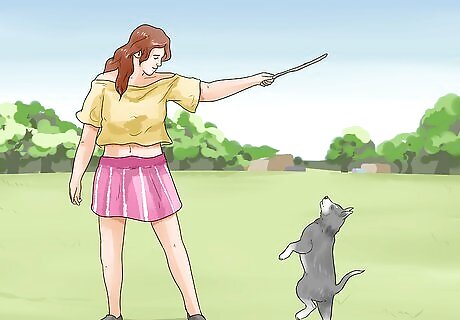
Change your routine to reduce exposure to triggers. While you are retraining your dog, try to avoid his triggers. This might mean changing your walk route to something that is quieter and less used by dog walkers or playing vigorous games in the yard to burn off energy rather than going to the park.














Comments
0 comment